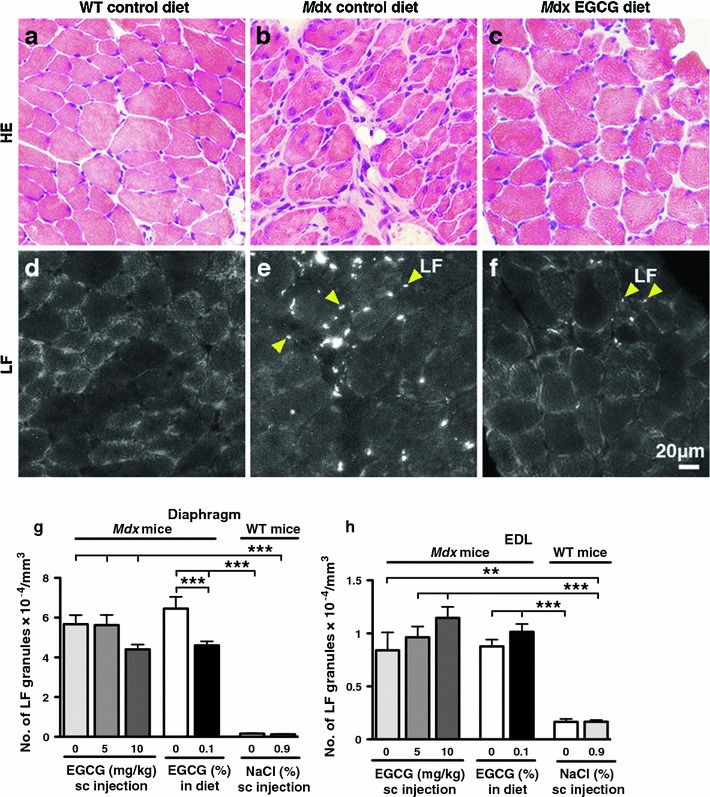Fig. 5.

Effects of EGCG on LF formation in diaphragm (b, c, e, f, g) and EDL (h) muscles of 8-week-old mdx mice at the end of EGCG treatment schedules. a–c Diaphragm muscle sections stained with haematoxylin and eosin. d–f Autofluorescent images of serial muscle sections. Mdx control muscles show the typical muscle degeneration and regeneration (b) and abundant LF granules (white dots in e), a product of oxidative stress (g, h). LF granules are rarely seen in muscles in age-matched WT mice (a, d, g, h). In diaphragm muscles of mdx mice given 0.1% EGCG in their diet, the histology of the muscles is more normal, and the mean number of LF granules is significantly 29 ± 3% (n = 10) less than in mdx controls (c, f, g). In contrast, none of the EGCG treatments had a significant effect on LF formation in mdx EDL muscles (h). g n = 6–10 per group, h n = 7–10 per group. ***P < 0.001, **0.001 ≤ P ≤ 0.01
